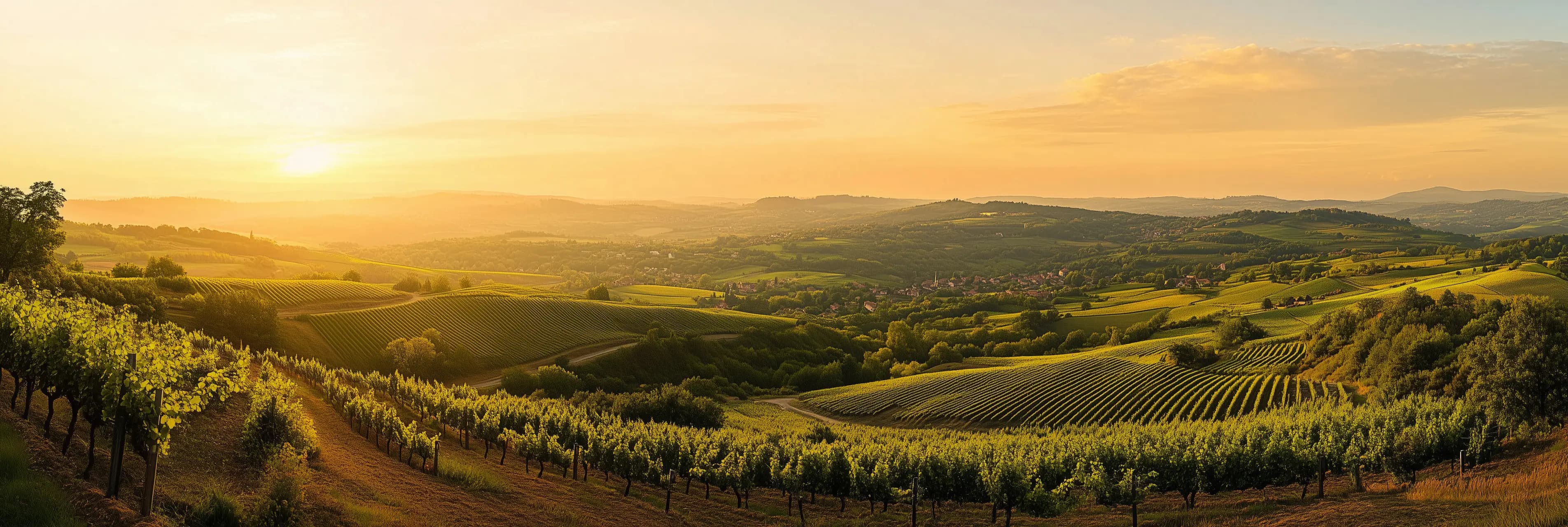From Brouilly to Moulin-à-Vent
While Beaujolais is often associated with the fresh and fruity Beaujolais Nouveau, the region has much more to offer, particularly through its ten distinct Crus. These Crus represent the pinnacle of Beaujolais winemaking, each with a unique terroir and character that reflects the diverse landscape of the region. In this article, we will explore each of the ten Crus, delving into what makes them unique and why they deserve a place on your wine list.
What are the Beaujolais Crus?
In the world of French wine, a "Cru" refers to a specific vineyard or group of vineyards known for superior quality, often linked to a unique terroir. In Beaujolais, the term denotes ten distinct appellations, each with its own microclimate, soil composition, and wine style. These Crus are a step up from the broader Beaujolais and Beaujolais Villages appellations, offering wines with greater complexity, aging potential, and expression of the Gamay grape.
The 10 Beaujolais Crus
1. Brouilly
Brouilly is the largest of the Beaujolais Crus, located at the southern end of the Cru zone. The wines are typically light, fruity, and approachable, with notes of red berries and a subtle minerality due to the granite and volcanic soils. Brouilly wines are perfect for those who enjoy a fresh, easy-drinking red.
2. Côte de Brouilly
Grown on the slopes of an extinct volcano, Côte de Brouilly wines are more structured than those from Brouilly. The vineyards face multiple directions, allowing for a range of ripeness in the grapes, resulting in wines with depth, bright acidity, and flavors of red fruits, stone, and a hint of pepper.
3. Chiroubles
At the highest altitude of all the Crus, Chiroubles wines are light and floral, with a vibrant acidity that makes them exceptionally fresh. These wines are often described as the most delicate of the Beaujolais Crus, with aromas of violets and a refreshing palate, perfect for pairing with lighter dishes or enjoying on a warm day.
4. Fleurie
Often considered the most elegant of the Crus, Fleurie wines are renowned for their floral bouquet, soft tannins, and silky texture. They are typically medium-bodied with notes of red fruits, roses, and subtle spices. Fleurie is a crowd-pleaser and an excellent introduction to the more refined side of Beaujolais.
5. Chénas
Chénas is the rarest of the Beaujolais Crus, known for its robust and aromatic wines. The wines here are often complex, with a good balance of fruit and spice, and can develop beautifully with a few years of aging. Expect notes of peony, wild cherry, and a touch of earthiness.
6. Juliénas
Named after Julius Caesar, Juliénas offers bold and structured wines that can be both fruity and spicy. The vineyards here benefit from granite, schist, and clay soils, producing wines with rich red fruit flavors, hints of cinnamon, and a pleasant tannic grip.
7. Morgon
Morgon is one of the most famous Beaujolais Crus, known for producing full-bodied wines that age gracefully. The key characteristic of Morgon wines is the "morgonne", a unique earthiness that combines ripe cherry, stone fruit, and subtle notes of mushroom and spice. These wines can develop beautifully over time, resembling a light Burgundy.
8. Régnié
Recognized as the newest Cru in 1988, Régnié produces wines that are fresh and fruity, often with a slight tannic structure. Régnié wines are approachable yet can surprise with their depth, offering notes of raspberry, cherry, and a touch of pepper.
9. Saint-Amour
Often associated with romance, Saint-Amour wines are enjoyed on Valentine's Day but are deserving of attention year-round. The wines can range from light and fruity to more structured and spicy, offering flavors of red fruits, peach, and subtle herbal notes.
10. Moulin-à-Vent
Known as the King of Beaujolais, Moulin-à-Vent produces some of the most structured and age-worthy wines in the region. The wines often have intense aromas of ripe black fruits, violets, and spices, with a tannic backbone that allows them to evolve beautifully over several years. Some even compare them to Pinot Noir from Burgundy due to their complexity and aging potential.
What makes each Cru unique?
The uniqueness of each Cru comes from a combination of factors including soil type, altitude, exposure to sunlight, and microclimate. For example, the granite soils of Morgon contribute to its powerful, mineral-driven wines, while the volcanic slopes of Côte de Brouilly give its wines a distinct minerality. The diversity of terroir within this relatively small region allows for a wide range of wine styles, all while showcasing the versatility of the Gamay grape.
How to experience Beaujolais Crus
For those looking to explore these wines, visiting the Beaujolais region offers a fantastic opportunity. Many wineries welcome visitors for tastings, where you can sample the different Crus side by side. Key producers to look out for include Domaine Jean Foillard (Morgon), Château Thivin (Côte de Brouilly), and Domaine des Terres Dorées (Fleurie). Whether you visit in person or enjoy these wines at home, exploring the Beaujolais Crus is a journey into the heart of French winemaking.
The Beaujolais Crus are the hidden gems of the region, offering a range of styles and expressions that go far beyond the popular Beaujolais Nouveau. From the light and floral Chiroubles to the robust and complex Moulin-à-Vent, each Cru tells its own story through the glass. So next time you’re exploring the wine aisle, look beyond the familiar and discover the diverse world of Beaujolais Crus—you might just find your new favorite wine.

